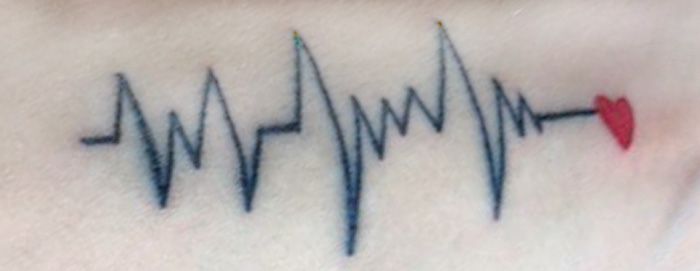By EMS1 Staff
Among younger first responders, it’s the just about the coolest thing ever to get an EMS tattoo. Tattoos and body art are gaining societal acceptance, and about 40% of all U.S. households reported at least one member had them.
It might not be the best idea for every new EMT to get an EMS tattoo, but of course they will anyway. Just tell them not to make these common mistakes.
1. Can you get a job with your tattoos?
You’re going to deal with a lot of people in EMS. Maintaining a clean-cut image will help you quickly gain the trust of a patient in an emergency.
Keeping tattoos invisible in a suit (not on the hand, not on the neck or face) is a good idea; keeping tattoos invisible in short sleeves is even better.
Yes, most people don’t care one way or another. But it only takes one or two complaints about your ink to make your employer feel that you’re a liability to the company. Even if you’ve done your job well, and even if they like you as a person, they’d have no choice but to let you go.
2. Do you have the right EKG pattern?
When getting technical things tattooed in you, you’ll run into the same problem with getting words tattooed on you in a foreign language: does the tattoo artist know what it means, and do they have the skill to create the image you want?
 Cool tattoo, but you can look forward to receiving a lecture for having a weird rhythm on it.
Cool tattoo, but you can look forward to receiving a lecture for having a weird rhythm on it.
Go ahead and review your EKG rhythms before you submit a design to your tattoo artist. Make sure they know that the rhythm is specific and they should not take liberties with the design.
3. Staff of Hermes vs. Rod of Asclepius
The Staff of Hermes has been associated with medicine after the U.S. Army Medical Corps started using it in 1902, but that’s not what it really means. Instead, the two-winged, two-snake Caduceus design actually stands for commerce and negotiation.
The Rod of Asclepius is an image of a single snake wrapping itself around a wooden staff. It’s the traditional symbol of medicine and is the one you should get actually tattooed if you’re trying to be true to the profession.
4. Have you earned your EMS tattoo?
I knew a student who got the star of life tattooed on his shoulder blade a couple of months into our EMT class. Of course, he ended up washing out a few weeks later and had to wait another few months to retake the course.
This isn’t to say that you must perform CPR a hundred times or run a certain amount of calls before you get an EMS tattoo, but understand that just because you tattooed the word “HERO” on your shoulder doesn’t make it true.
There’s a notoriously short career expectancy in EMS. People burn out, get promoted, or find jobs that pay better. Sure, some will stay for ten or twenty or thirty years and really enjoy their work, but then again, those people probably aren’t the type to get EMS tattoos either.
5. Does your EMS tattoo look like a t-shirt or Facebook meme?
Taste is subjective, but there are a few qualities of a tattoo that make it worse to look at than others.
Is your tattoo gaudy? Most people don’t know what first responders do, and they’re quick to give them the title of ‘hero.’ As someone who’s actually in the profession, act like you’ve been here before.
Is your tattoo a cliche? There are so many EMS-related t-shirts and Facebook images you can use to flex your inner Ricky Rescue from time to time.
- “In your darkest hour, I’ll be there”
- “Risking mine to save yours”
- “I fight what you fear”
- “You run out, we run in”
- “The louder you scream, the faster we come.”
They’re cheaper than tattoos, and thankfully, you can also take them off at the end of the day.
6. Will your EMS tattoo get in the way of living your life?
We’re all for tattoos and self expression, but there is at least one real downside to getting eight stars of life tattooed up and down your torso.
The thing about large, visible EMS tattoos is that if they’re constantly staring back at you in the mirror and identifiable even in your street clothes, it means that you can’t ever leave your job.
Burnout is a huge problem for EMS professionals, especially for the type of people whose lives revolve around being an EMT or paramedic, in other words, those most likely to get EMS tattoos in the first place.
As an EMT, one of the best things you can do for the sake of your mental health is to not define yourself by your job. There’s a difference between saying, “I am an EMT” versus, “I am a loving sibling, enjoy NPR and body art, and find great satisfaction in my job as an EMS professional.”











